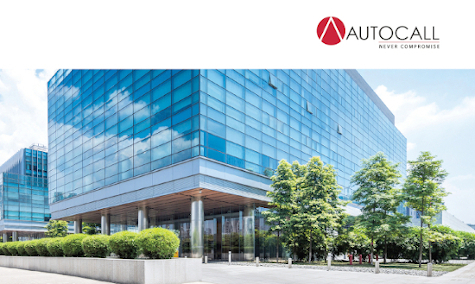10 Questions to Ask When Choosing a Fire Alarm System

Whether you are designing and engineering a new facility or renovating an existing building, there are many decisions to be made – and a lot of them have long-term consequences. With every major choice you make, you need to weigh multiple factors: the safety, comfort, and sustainability of your building; the initial capital expense; the design and installation effort required; the importance of value-added features; the long-term total cost of ownership; the ease of maintenance and expandability; the availability of service and support, and more.
In many cases, you and those who manage the facility will have to live with the consequences of your decisions for a long time.
One of the most critical decisions you will make is your choice of a fire alarm and life-safety system. To make the best-informed decision, you must consider all factors. Here are 10 vital questions you should ask before making your final choice.
QUESTION #1: DOES THE VENDOR HAVE THE EXPERIENCE TO PROVIDE YOUR FACILITY WITH OPTIMAL PROTECTION AND VALUE?
Every facility is unique. Some industries and environments have conditions that call for specialized fire protection equipment, such as high dust or noise levels, or the presence of high-value assets or flammable substances. Others, such as hospitals and university dormitories, are 24/7 environments that require special care to avoid disruption to occupants.
Make sure your prospective vendor has proven experience with your type of facility and its unique requirements – and offers a full portfolio of products, solutions, and services to satisfy them.
QUESTION #2: DOES THE VENDOR OFFER DESIGN SERVICES OR PROVIDE RESOURCES TO HELP YOU DESIGN AND ENGINEER THE SYSTEM?
When you’re designing and engineering a fire and life-safety system, you don’t want to be starting from scratch. Look for a vendor that can design the system for you or support you with all the resources you need to simplify and accelerate the process, from templates and specification tools to videos and webinars. It is also to your advantage to work with a company that understands the applicable codes and standards, and can help you design a system that will meet the requirements enforced by the local AHJ (authority having jurisdiction).
QUESTION #3: ARE THE SYSTEM COMPONENTS EASY AND AFFORDABLE TO CONFIGURE AND INSTALL?
Fire protection products are not created equal, particularly when it comes to configuration and installation. Conventional fire alarm systems require the use of heavier-gauge wiring, and dedicated wiring runs from each device to the control unit. That means larger conduit sizes and more wiring, which can make configuration and installation challenging and costly. By contrast, an addressable fire alarm system allows multiple devices to be linked in a single circuit and often allows less costly, lighter-gauge wire and smaller conduit to be used. This can greatly simplify configuration, and the cost and effort to install.
QUESTION #4: IS NOTIFICATION DEVICE TESTING EASY AND NON-DISRUPTIVE?
With some fire alarm systems, each device on the system has to be manually tested to ensure its proper function. The larger your network, the more resource and time-intensive the effort, and the greater the risk of human error. Testing can also be disruptive to occupants. However, many addressable fire alarm notification devices are self-testing, requiring fewer resources and less effort. In addition, testing of addressable devices can be conducted at any time without any disruption to building occupants. In addition, each device has its own address on the fire alarm system and the intelligence to communicate with the fire alarm panel. So when a situation occurs, you know the precise location … and an alarm or appropriate message can be delivered to that specific area to help ensure the safety of building occupants.
QUESTION #5: IS SYSTEM MANAGEMENT USER-FRIENDLY AND INTUITIVE?
Once your system is installed and operating, there’s a good chance you will have non-experts in charge of its daily management. That’s why your system should be as easy and intuitive to operate as possible. Make sure the system provides important life-safety information and includes features that make it easy to operate, such as color graphic information displays, touchscreen controls, and pan-and-zoom for precise navigation. An integrated life-safety information management workstation can serve this purpose and help manage your overall environment.
Ease of use also means ease of servicing. For example, some fire alarm systems offer remote diagnostics, providing real-time visibility into system operations and performance, and automating the detection and notification of abnormal conditions. This can speed up servicing and minimize downtime.
Another measure of user-friendliness is mobile access. We live in a mobile world; no one should be tethered to a desktop to do their jobs anymore. Mobile access can keep you in touch with your system via your smartphone or other mobile device, which is especially helpful if you’re managing the fire and life-safety systems for a campus or widely dispersed group of facilities.
QUESTION #6: ARE THE INITIATING DEVICES SMART ENOUGH TO MINIMIZE FALSE ALARMS?
When a conventional sensor gets dirty, its sensitivity may be affected, creating the potential for annoying nuisance alarms. Look for a fire alarm system with intelligent devices that feature “drift compensation.” These devices can evaluate environmental data and will compensate for contamination to maintain detector sensitivity and increase immunity to nuisance alarms.
QUESTION #7: IS THE SYSTEM EXPANDABLE, UPGRADEABLE, AND SCALABLE?
You don’t want a fire alarm system that’s frozen in time or destined for obsolescence. When new technological advances become available, you’ll want to take advantage of them. In the future, you may reconfigure or expand your facility, or want to add new devices to your network. It’s important to ensure that your fire and life-safety system is both forward- and backward-compatible so that it can leverage your existing infrastructure, and be easily and cost effectively modified, expanded, upgraded, and scaled to meet evolving needs.
QUESTION #8: IS THE VENDOR ABLE TO PROVIDE INSPECTION, MAINTENANCE, AND REPAIR SERVICES?
Getting your system installed and operating is just the beginning. To keep it performing optimally and in compliance with all applicable codes and standards, such as NFPA 72, it will require regular inspection and maintenance, and if necessary, repair services. Does your vendor have the local resources, expertise, and round-the-clock availability to perform these services?
QUESTION #9: IS THE VENDOR ABLE TO INTEGRATE COMPONENTS OF THE SYSTEM FOR EASIER MANAGEMENT AND BETTER RESPONSE?
The value of an integrated fire and life-safety system is greater than the sum of its parts. When all components of the system work in concert with each other – from fire alarm and mass notification devices to access control, video surveillance, and building automation systems – you can tailor your solution to meet your specific needs, manage it as a complete system (rather than a collection of devices). This will help ensure a more integrated and effective response. Your fire and life-safety system vendor should have the integration expertise to make it happen and build a comprehensive solution.
QUESTION #10: DOES THE SYSTEM INCLUDE FEATURES THAT MAKE IT EASIER TO COMPLY WITH INDUSTRY AND GOVERNMENT REGULATIONS?
Inspection and test reports are essential to ensuring compliance with fire and life-safety codes and standards, and applicable regulations (such as The Joint Commission requirements for healthcare institutions). You could file that information manually and create reports from scratch – but that’s time-consuming and subject to human error. Your fire alarm and life-safety system should provide automatic, secure data storage right within the control panel. In addition, you stand to benefit if your vendor can utilize a compliance platform that keeps all of this important information in one place. This technology makes life easier for the building manager and enables collaboration to help ensure the safety and compliance of your buildings. Clearly, there are many factors to consider when choosing a fire alarm system for your facility. But with the protection of your people, property, and assets at stake, it’s a decision you want to get right. Answering these 10 questions will help you zero in on the best system that will not only meet all of your present safety requirements, but will deliver on your future needs as well.
This white paper was originally written by AutoCall.
WSS Integrated Technologies is a proud partner of AutoCall.
- The Role of Continuous Monitoring and Analysis in Intrusion Detection - September 6, 2024
- Understanding Crucial Terms and Technologies in Fire Alarm Systems - August 30, 2024
- The Anatomy of a Fire Alarm System: Essential Components for Complete Protection - August 23, 2024
